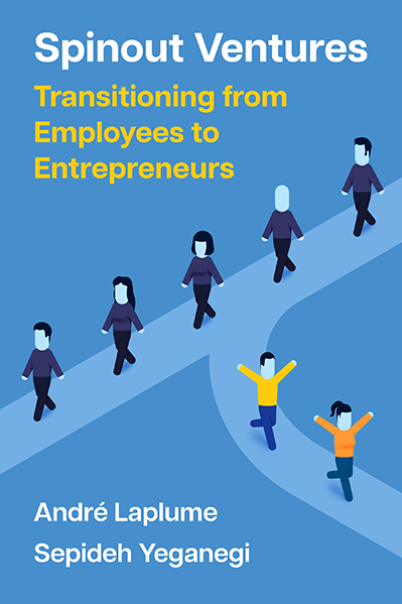First Mover Advantage Theory of Entrepreneurship
Should entrepreneurs strive to be first? This is an important question that is relevant to myriads of decisions that entrepreneurs make involving commitments of resources and attention. For instance, given the option to implement two ideas, one with early entry potential and the other with late entry potential, which should an entrepreneur run with?
According to Kerin et al. (1992), "studies purport to demonstrate the presence of a systematic direct relationship between order of entry for products, brands, or businesses and market share."
First mover advantage theory posits that new entrants that are earliest to a new market niche get several advantages, such a brand awareness and a reputation for innovativeness. Followers can built great brands too, though at a greater cost.
Another first movers advantage is the ability to tie up factor markets by engaging in long term contracts with key suppliers, which makes it harder for followers to acquire the necessary complementary assets to compete. Tying up suppliers only works if there are few quality suppliers available.
First movers may also ride down the experience curve ahead of rivals creating barriers to entry. In general, this advantage is only sustainable if followers have fewer resources to be able to speed down the experience curve even faster, then catch up and surpass the leader.
There are some reasons to question the notion of first mover advantage. Startups usually occur in clusters where more than one entrepreneur independently pushes a business model, product, or technology. After a technological discontinuity, many individuals independently pursue the next logical business innovation, forming a cohort of competing new ventures known as the fermentation stage (Tushman and Anderson, 1986).
Interestingly, evolutionary theories of technological innovation tend to discount the first mover, arguing instead that the first mover takes on extra costs (e.g., training customers and basic research) that the second mover does not need to bear. Followers can benefit from the leader's wake of supplier training and research and development spillovers and use reverse engineering to save on development time. This cost advantage me be enough in the early stages of an industry to make the difference between winning and losing.
Teece (1986) suggests that first movers usually win only if followers don't have access to the intellectual property needed to imitate, or when the followers lack the complementary assets (manufacturing, distribution, and marketing) needed to compete effectively. Entrepreneurs need to compare themselves with the incumbent firms and size up their ability to compete.
According to Kerin et al. (1992), "studies purport to demonstrate the presence of a systematic direct relationship between order of entry for products, brands, or businesses and market share."
First mover advantage theory posits that new entrants that are earliest to a new market niche get several advantages, such a brand awareness and a reputation for innovativeness. Followers can built great brands too, though at a greater cost.
Another first movers advantage is the ability to tie up factor markets by engaging in long term contracts with key suppliers, which makes it harder for followers to acquire the necessary complementary assets to compete. Tying up suppliers only works if there are few quality suppliers available.
First movers may also ride down the experience curve ahead of rivals creating barriers to entry. In general, this advantage is only sustainable if followers have fewer resources to be able to speed down the experience curve even faster, then catch up and surpass the leader.
There are some reasons to question the notion of first mover advantage. Startups usually occur in clusters where more than one entrepreneur independently pushes a business model, product, or technology. After a technological discontinuity, many individuals independently pursue the next logical business innovation, forming a cohort of competing new ventures known as the fermentation stage (Tushman and Anderson, 1986).
Interestingly, evolutionary theories of technological innovation tend to discount the first mover, arguing instead that the first mover takes on extra costs (e.g., training customers and basic research) that the second mover does not need to bear. Followers can benefit from the leader's wake of supplier training and research and development spillovers and use reverse engineering to save on development time. This cost advantage me be enough in the early stages of an industry to make the difference between winning and losing.
Teece (1986) suggests that first movers usually win only if followers don't have access to the intellectual property needed to imitate, or when the followers lack the complementary assets (manufacturing, distribution, and marketing) needed to compete effectively. Entrepreneurs need to compare themselves with the incumbent firms and size up their ability to compete.
Sources:
Kerin, R.A., Varadarajan, P.R. and Peterson, R.A., 1992. First-mover advantage: A synthesis, conceptual framework, and research propositions. The Journal of Marketing, pp.33-52.
Teece, D. J. 1986. Profiting from technological innovation: Implications for integration, collaboration, licensing and public policy. Research policy, 15(6), 285-305.
Tushman, M.L. and Anderson, P., 1986. Technological discontinuities and organizational environments. Administrative science quarterly, pp.439-465.
